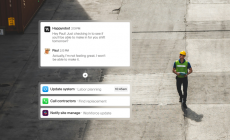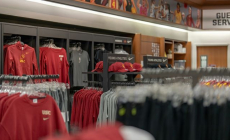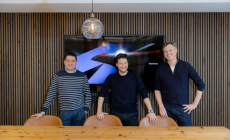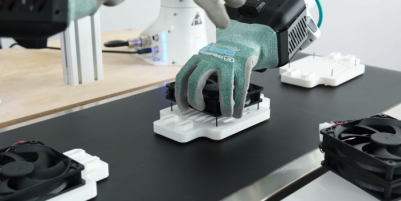-
AI startup Onton raises $7.5M to reinvent the way the world discovers and decides what to buy - November 26, 2025
-
Forklift Market Positions for Recovery as Confidence Expected to Build from 2026 - November 26, 2025
-
PROCare achieves 300% order capacity increase and 99% picking accuracy with Forterro’s ERP solution, Orderwise - November 26, 2025
-
DHL boosts operational efficiency and customer communications with HappyRobot’s AI Agents - November 25, 2025
-
STENA LINE TEAMS UP WITH CAMERA TELEMATICS TO DRIVE SAFETY IMPROVEMENTS AT IRISH SEA PORTS - November 25, 2025
-
Another design award for Toyota’s lithium-ion Traigo_i counterbalanced forklift - November 21, 2025
-
Stuut Technologies Raises $29.5 Million Series A Led by Andreessen Horowitz to Automate Accounts Receivable Work - November 20, 2025
-
INCREASED DIGITAL INVESTMENT REQUIRED TO KEEP PACE WITH 2026 CUSTOMS CHANGES - November 19, 2025
-
FULFILMENT SOLUTIONS FOR SPORTS MERCHANDISE: KEEPING OUR EYE ON THE GAME - November 19, 2025
-
COMPLEX, COSTLY & CONFUSING – THE END OF DE MINIMIS - November 19, 2025
New Physiological Monitoring Technology and Privacy Policy Designed to Safeguard Workers’ Rights While Bringing Valuable Insights to Employers
As companies around the world rapidly adopt wearable industrial devices to improve worker safety and business productivity, the protection of personal information being collected is an ongoing concern. Kenzen, the smart personal protective equipment innovator (or industrial internet of things innovator) that recently launched a physiological monitoring system to keep workers safe from heat, overexertion, and illness, has debuted a new privacy policy for its system that is precedent-setting in the data collection industry. The policy details the type of information collected from a worker, how a worker can opt out of the system, how long the data is available, and who owns it. The privacy policy is accessible on the Kenzen website and is easy to understand, to ensure all workers can learn about the system and know their rights when Kenzen is deployed at their worksite.
The Kenzen system collects 1.3 million data points per worker per day. The information is used to protect the workers from injury on the job while helping to optimize total worker health. Three distinct views of the data are available at different levels within a company, one for the worker, one for the safety supervisor, and one for corporate EHS. Kenzen’s proprietary algorithms filter data at each level to keep the most private information available only to the worker. When the information indicates a need for an intervention to prevent the worker from overheating, an alert and suggested next steps are sent to the supervisor. At the corporate level, health and safety teams receive anonymized trend information derived from the original data, which they use to make decisions to improve safety at the worksite.

































